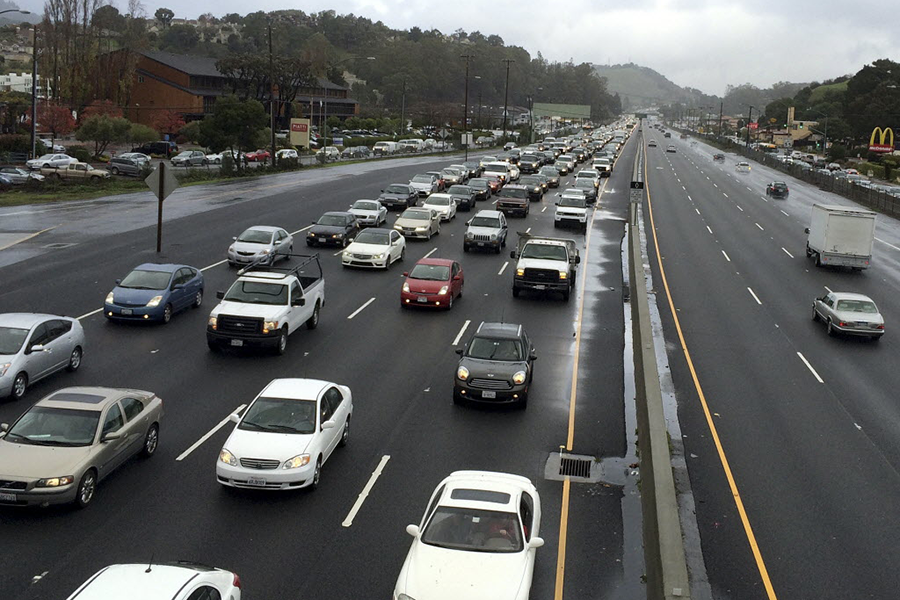California gets rain at last: Will it be enough to help with drought?
Loading...
| Los Angeles
Even as drought-weary Californians are basking in a five-day downpour, they are largely savvy enough to know that this storm – no matter how mighty – is not enough to turn the tide for a region engulfed in a historic three-year dry spell.
Nonetheless, there are a few glimmers that indeed, this drenching is affecting some important water indicators in significant ways. The state water project, which channels water to some 25 million residents statewide and nearly a million acres of farmland, will double its allocation in 2015. Admittedly, that figure was at a 54-year low in 2014: Agencies received 5 percent of the water they requested. But on Monday, officials committed to 10 percent for 2015.
“This rainfall is really welcome and is making a dent in the drought,” says Ted Thomas, information officer for the California Department of Water Resources, even as he adds the necessary caveat that the state will need many more big storms to really turn the drought around.
He also points cautiously to at least one other important indicator – the Sierra snowpack. It stands at 34 percent of normal for this time of year – a level not hit until the end of February this past winter. “This is good for us,” Mr. Thomas says.
At the same time, the storm is ushering in additional problems. Heavy rainfall in the San Francisco Bay Area contributed to a sinkhole opening up Wednesday morning on the Bay Bridge. And residents in southern California towns such as Glendora are contending with mudslides triggered in areas where vegetation was burned off in recent fires.
As the rains continue, some records are being broken. On Tuesday, downtown Los Angeles experienced the most rainfall in a single day since records have been kept – 1.21 inches of rain. Santa Barbara has seen more than two inches, while Monterey County has taken in six.
But while the storm is expected to continue through Thursday before moving eastward, meteorologists suggest that the overall winter outlook is still sobering.
“We are seeing a weak El Niño,” says senior AccuWeather meteorologist Kristina Pydynowski. This weather system brings heavy rains to the West Coast only if the Pacific waters have warmed up considerably. “The waters are not warming up right now,” she notes, adding that the long-term projections for the West Coast do not suggest a drought-busting level of precipitation.
Still, she is quick to say that the current weather system is “definitely helping.” The normal amount of rainfall for the Los Angeles area between April 1 and Nov. 30 is roughly three inches. But this year, the 1.2 inches the city has received during the past week is more than the entire amount that fell during that time period in 2014.
Every little bit helps, says Felicia Marcus, chair of the State Water Resources Control Board. “The key thing is you have to be really grateful for rain,” she says, adding that even as Californians welcome the rainy days, they understand they are in a new era. “People need to conserve every drop of water like it was their last,” she says.
Cities are stepping up to the plate, she says. For instance, San Diego took action this past month after its water use was up 3 percent. Even though the city’s daily per capita gallon consumption is far lower than the state average – 76 versus 109 – officials enacted a tough new round of conservation standards.
“They knew what they were doing was not enough and took responsibility for it,” Ms. Marcus says. “This is what we all have to do, no matter how much we revel in the current storms.”








